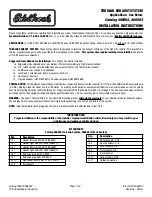
6. Return the rear seat backrest to its
original rearward and locked position.
Pull slightly on the seat backrest and
make sure that it is locked.
BOOSTER SEATS
Use a belt-positioning booster seat for
children who have outgrown or no longer
properly fit in a child restraint and meet
the following criteria.
•
Generally children who are less than
57 in (1.45 m) tall.
•
Are greater than age four (4) and less
than age twelve (12).
•
Are between 40 lb (18 kg) and 80 lb
(36 kg) and upward to 100 lb (45 kg).
Many state and provincial laws require that
children use approved booster seats until
they reach age eight, a height of 57 in
(1.45 m) tall, or 80 lb (36 kg).
Booster seats should be used until you can
answer yes to all of these questions when
seated without a booster seat:
E142595
•
Can the child sit all the way back
against their vehicle seat backrest with
knees bent comfortably at the edge of
the seat cushion?
•
Can the child sit without slouching?
•
Does the lap belt rest low across the
hips?
•
Is the shoulder belt centered on the
shoulder and chest?
•
Can the child stay seated like this for
the whole trip?
Always use booster seats in conjunction
with your vehicle lap and shoulder belt.
Types of Booster Seats
E68924
•
Backless booster seats
If your backless booster seat has a
removable shield, remove the shield.
If a vehicle seating position has a low seat
backrest or no head restraint, a backless
booster seat may place your child's head,
as measured at the tops of the ears, above
the top of the seat. In this case, move the
backless booster to another seating
position with a higher seat backrest or
head restraint and lap and shoulder belts,
or consider using a high-back booster seat.
39
2022 Maverick (CFE) Canada/United States of America, enUSA, Edition date: 202106, First-Printing
Child Safety















































